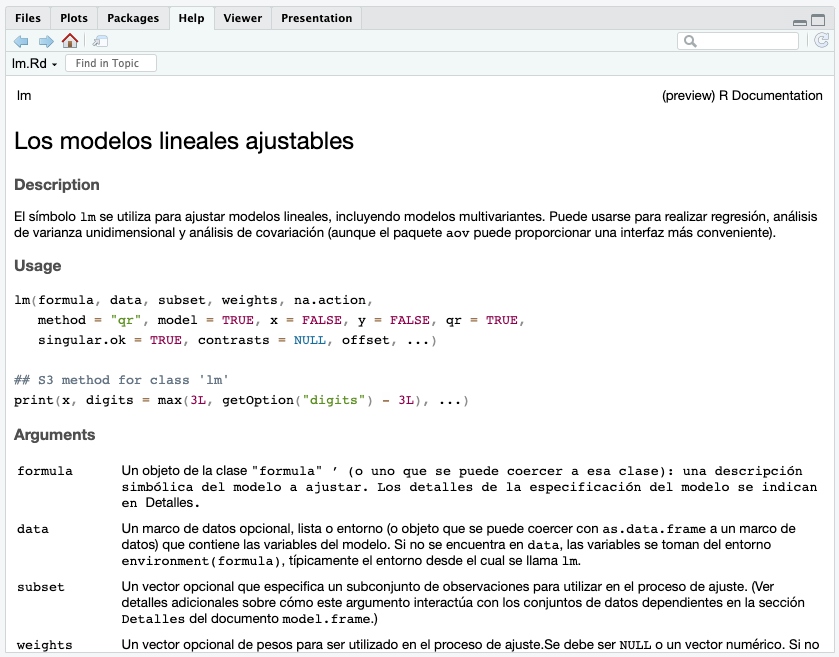
lang
Use an LLM to translate a function’s help documentation on-the-fly. lang overrides the ? and help() functions in your R session. If you are using RStudio or Positron, the translated help page will appear in the usual help pane.
If you are a package developer, lang helps you translate your documentation, and to include it as part of your package. lang will use the same ? override to display your translated help documents.
Installation
To install the GitHub version of lang, use:
install.packages("pak")
pak::pak("mlverse/lang")Using lang
If you have not used mall yet, then the first step is to set it up. Feel free to follow the instructions in that package’s Get Started page. Setting up your LLM and mall should be a one time process.
On an every day R session, you’ll just need to load lang and then tell it which model to run using llm_use():
library(lang)
llm_use("ollama", "llama3.2", seed = 100)After that, simply use ? to trigger and display the translated documentation. During translation, lang will display its progress by showing which section of the documentation is currently translating:
> ?lm
Translating: TitleIf your environment is set to use the Spanish language, the help pane should display this:

R enforces the printed name of each section, so they cannot be translated. So titles such as Description, Usage and Arguments will always remain untranslated.
How it works
The language that the help documentation will be translated to, is determined by one of the following two environment variables. In order of priority, the variables are:
LANGUAGELANG
It is likely that your LANG variable already defaults to your locale. For example, mine is set to: en_US.UTF-8 (That means English, United States). For someone in France, the locale would be something such as fr_FR.UTF-8. Llama3.2, recognizes these UTF locales, and using lang, calling ? will result in translating the function’s help documentation into French.
It uses the mall package as the integration point with the LLM. Under the hood, it runs llm_vec_translate() multiple times to translate the most common sections of the help documentation (e.g.: Title, Description, Details, Arguments, etc.). If lang determines that your environment is set to use English, it will simply display the original documentation.
Considerations
Translations are not perfect
As you can imagine, the quality of translation will mostly depend on the LLM being used. This solution is meant to be as helpful as possible, but acknowledging that at this stage of LLMs, only a human curated translation will be the best solution. Having said that, I believe that even an imperfect translation could go a long way with someone who is struggling to understand how to use a specific function in a package, and may also struggle with the English language.
Debug
If the original English help page displays, check your environment variables:
Sys.getenv("LANG")
#> [1] "en_US.UTF-8"
Sys.getenv("LANGUAGE")
#> [1] ""In my case, lang recognizes that the environment is set to English, because of the en code in the variable. If your LANG variable is set to en_... then no translation will occur.
If this is your case, set the LANGUAGE variable to your preference. You can use the full language name, such as ‘spanish’, or ‘french’, etc. You can use Sys.setenv(LANGUAGE = "[my language]"), or, for a more permanent solution, add the entry to your your .Renviron file (usethis::edit_r_environ()).